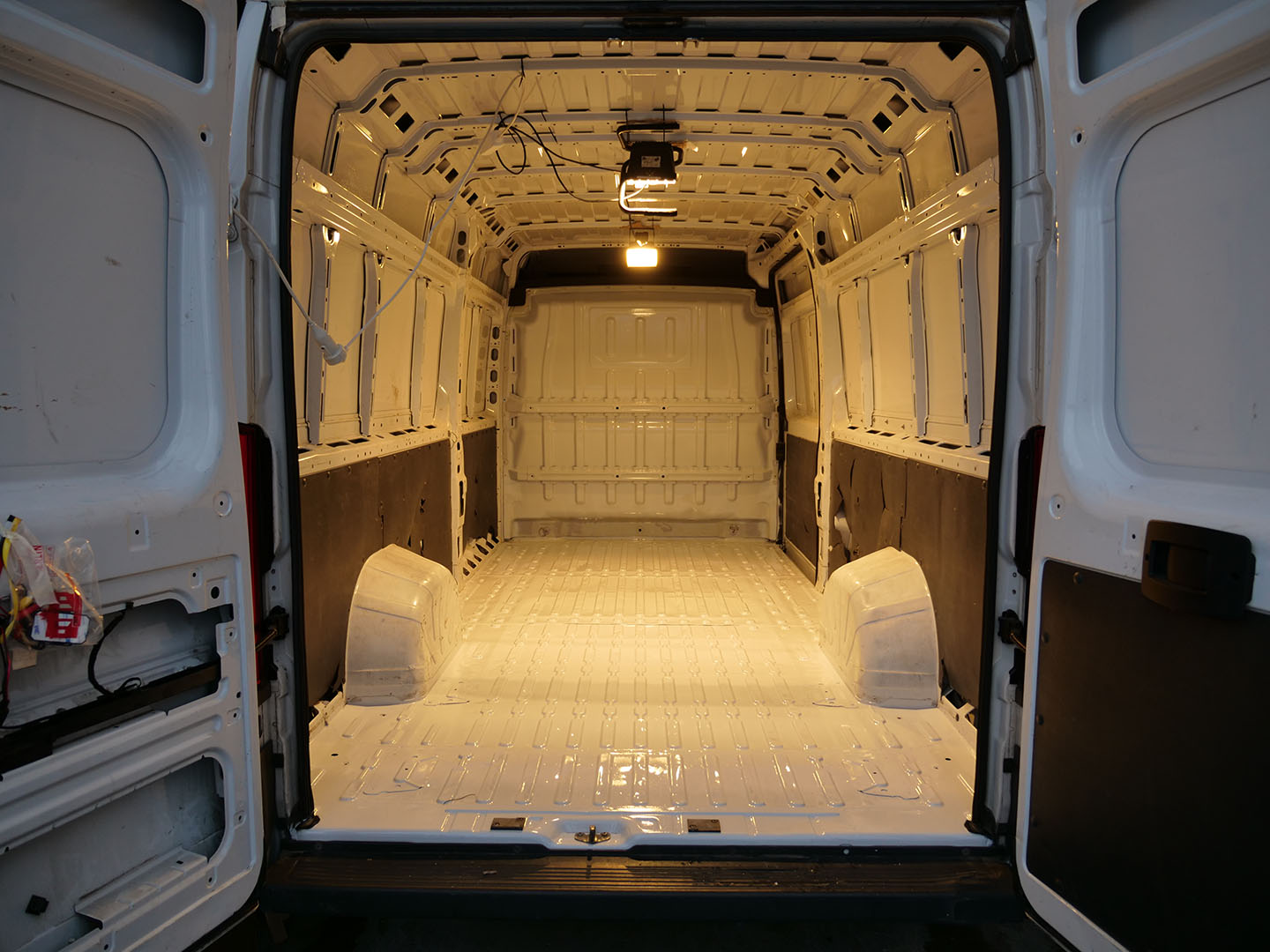The exterior paint of my van was - for a commercial vehicle - in good condition, but in the hold the paint was already worn off by packages and shoe soles or partially rotten. And all in all quite dirty. Since I didn't want to invest weeks in a van conversion, which then has to be dismantled again because it rustes underneath, it was clear: This has to be fixed first.
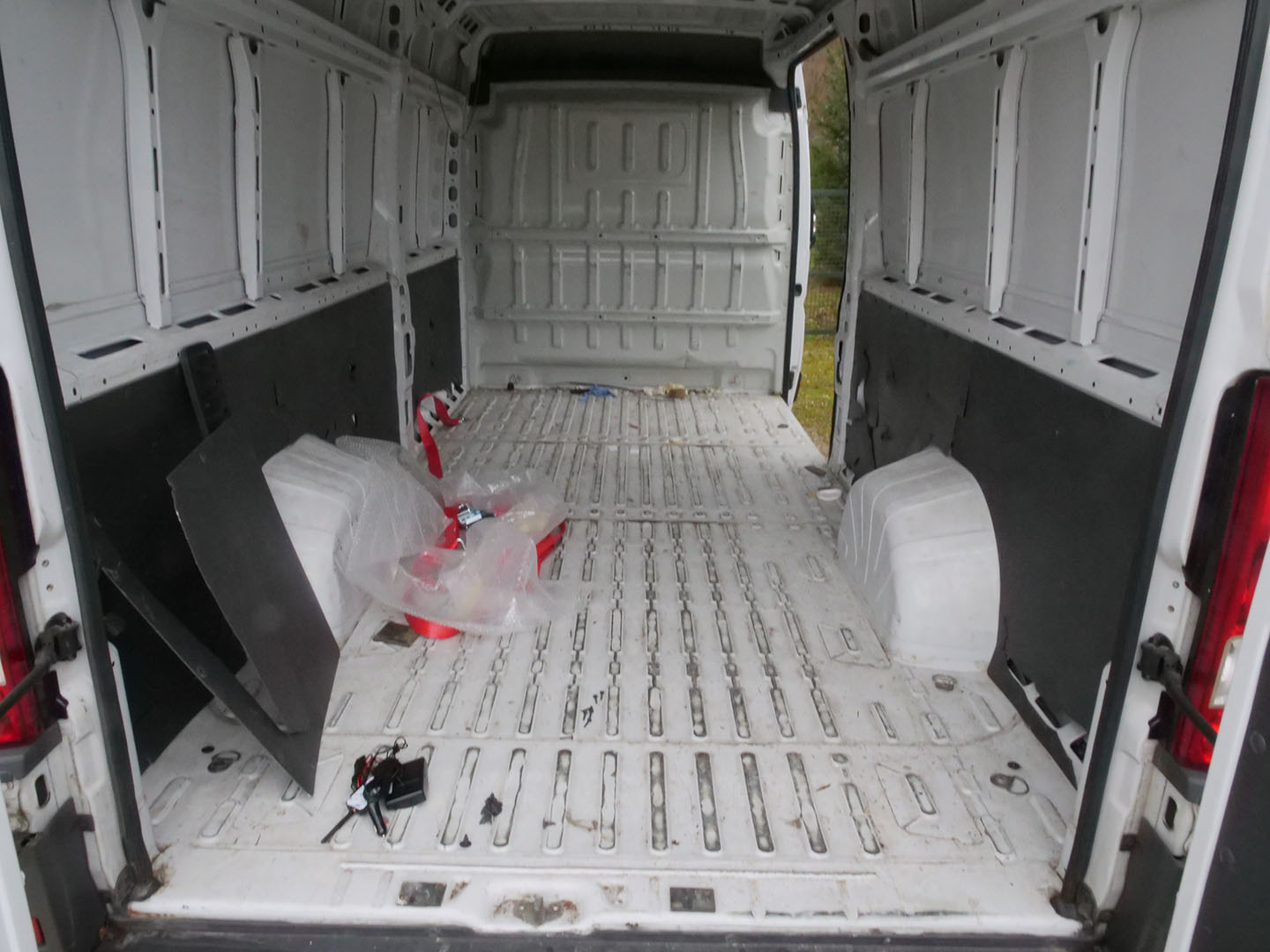
Required Tools
- A spray gun
- A pressure reducer](http://bit.ly/2FBK6IE), as 2-3 bar is usually used for painting. The pressure reducer should also filter some condensation from the air.
- A compressor from the neighbour.
- A proper respirator and glasses, the chemicals are no joke and gave me a day of headaches.
The choice of a paint
Basically there are water-based and acrylic-based paints. In addition there are 1component :and 2 component paints. 1c paints dry in the air, 2c paints have to be mixed with a second component (the hardener) to start and cure the chemical reaction (nothing happens with air alone). The latter is more toxic and holds better. And thus clearly has to be preferred. In addition it is to be noted that the colour paint (in my case Fiat 549B) may not be sprayed directly on the metal, a primer paint is required.
For me was certain: the top layer must be 2c. Because the paint-spray gun was very expensive, I wanted to buy 2c spray cans. These cost 20€/m² - which was too expensive for me. By the way, the functional principle of 2c cans is a button on the bottom which triggers the mixing of paint and hardener.
After consultation with several mail order companies, I was always recommended a 1c basecoat and 2c color paint. Advantages of this combination: 1K hardens faster, 2K over it becomes bomb-proof. So I ordered the following:
| Amount | Description |
|---|---|
| 1x | Silicone remover / degreaser |
| 2x | Mixing cup 385ml |
| 5x | Mixing cup 750ml |
| 5x | Masking tape 30mmx50m |
| 3kg | 2c Fiat 549B |
| 2l | 1c Primer |
| 2l | Thinner |
The colour code is under the bonnet of my Fiat Ducato BJ2015 (Fiat 549B). The thinner must be added as desired to adjust the liquid and the gloss of the paint. When rolling out the primer, we worked with \(3:1\) (primer:thinner), when painting with gun of the paint with \(2:1\) (549B:thinner). The paint was therefore more liquid and better suited for the gun.
After the paint job was done, half of the paint and half of the thinner was left over, I should have ordered the following:
| Menge | Beschreibung |
|---|---|
| 1x | Silicone remover / degreaser |
| 2x | Mixing cup 385ml |
| 5x | Mixing cup 750ml |
| 5x | Masking tape 30mmx50m |
| 1.5kg | 2K Fiat 549B |
| 2.5l | 1K Primer |
| 1l | Thinner |
Which refers to the following area
\($A_{total} = A_{floor} + A_{separation to cabin} = 4m * 1.8m + 1.9m * 1.8m = 10,62m^2\)$
The actual paint job
- sanding, sanding, sanding - I used 80 grit sandpaper from the DIY store. This is a bit too coarse, but faster. And finally, we're talking about the hold here.
- 1st layer basecoat rolling or spraying. Quantity: incl. dilution approx. 800ml.
- let dry for about 60 minutes, simply look in the description of your paint for the "dust-dry" or "overpaintable" time. This can be dependent on varnish to varnish (and above all also on the temperature). 4th 2nd Sends basecoat rolls or spraying (I would save myself the next time as said). Quantity: incl. thinner approx. 800ml.
- wait again for approx. 60 minutes.
- 1st layer 2K-colour varnish varnish (spraying). Quantity incl. dilution approx. 500-600ml.
- Wait 2-3h.
- Apply 2nd coat of 2-component paint (spraying). Quantity incl. thinner approx. 200-300ml. Somehow it was here less since I had problems to recognize not yet painted areas. Pay attention to good lighting.
- let harden, approx. 5 days (only to give an order of magnitude). The final hardening I have accelerated with infrared emitters and/or made possible at all only. When we painted, it was unfortunately winter. Otherwise the temperature of 10°C necessary for hardening would not have been reached.
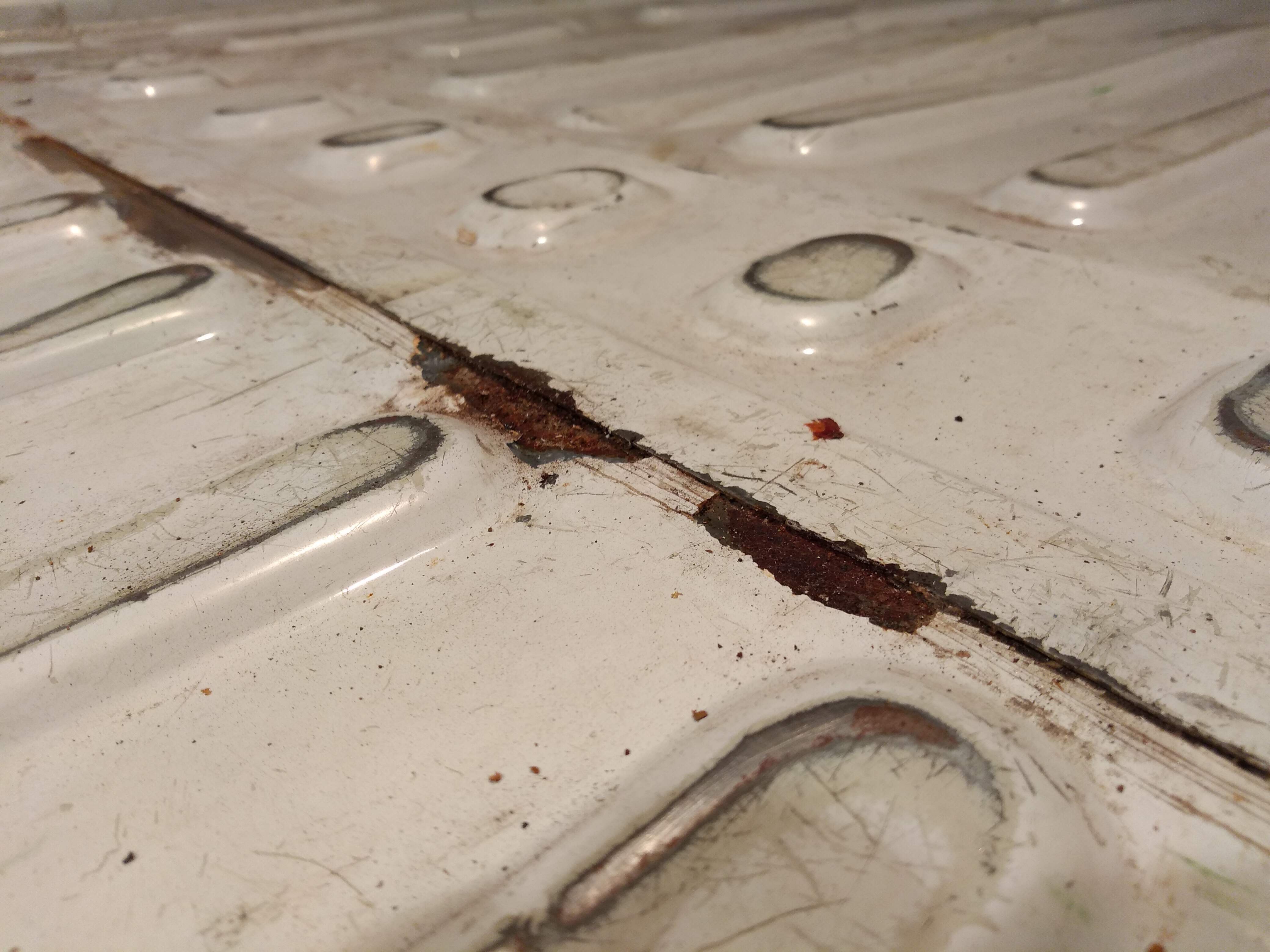
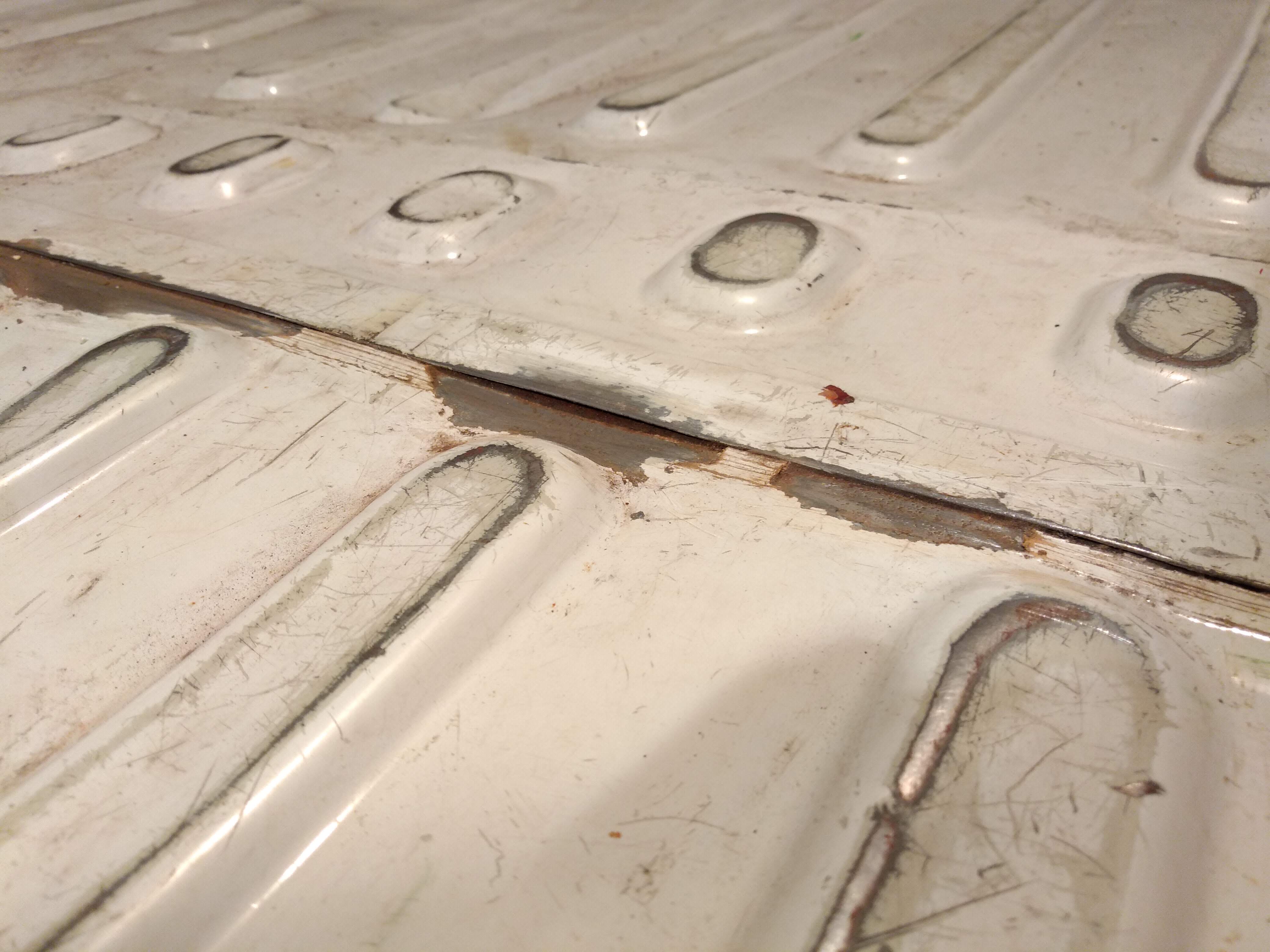
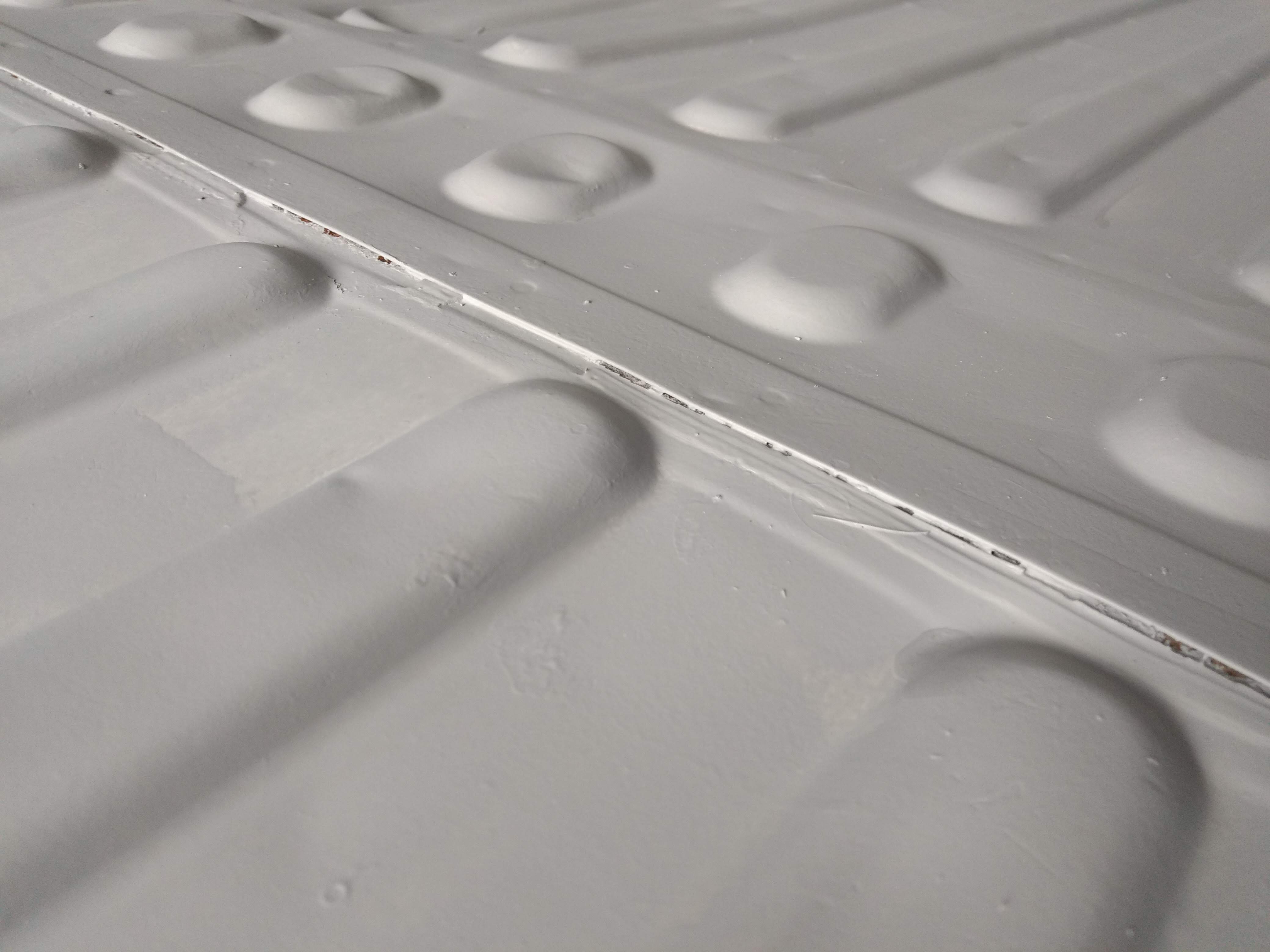
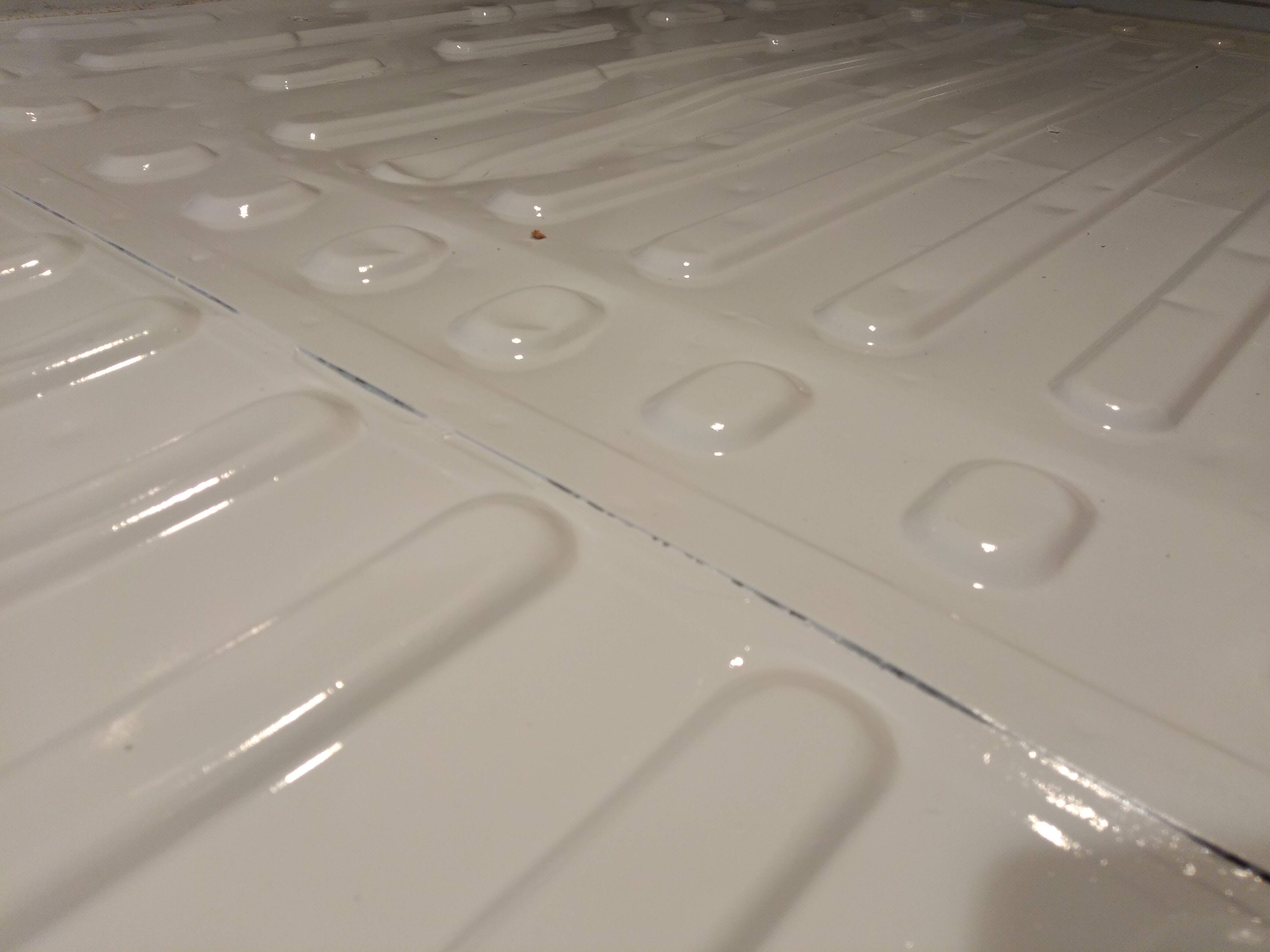
As it turned out, 1c paint dissolves the 1c paint. This means that even if the first coat of 1K basecoat is "dust-dry", it can be dissolved again by a new coat and, in combination with mechanical stress, removed from the sheet metal by the roller. If you use a 1c basecoat: Prefer to apply a single, thick layer.
Spraygun vs. Roll
From a previous project I had the paint spray gun setup with the construction of compressor, cleaning of the equipment with acetone and in particular the careful covering of all surfaces not to be painted with painter foil as extremely complex in memory. Therefore, the plan was to do this painting job simply with rollers, as this would primarily save the tedious masking.
After we rolled out the 1c primer, we sprayed the 2c paint with a pistol. And that would also be my recommendation: Take a paint spray gun. You "lose" (in my case) 4h for the careful covering of surfaces that are not to be painted, but the painting with the spray gun is much faster (30 minutes instead of 60 minutes per coat if you roll and brush), the result is more orderly and in the case of 1c paints also less "mechanical" load on the first coat of paint, which minimizes the risk of a renewed dissolving and removal of the underlying paint layers.
The roller beads used - even for the 1c basecoat - should have "2c suitability" or "solvent suitability". Otherwise, they dissolve after 2-3 minutes, which has caused us considerable post-processing effort, since the roll foam inclusions had to be removed again.
Also I can only advise you to ask a faithful friend if he helps you - which makes sense for the project in general. When we painted, it has proven that I "spray" with my painting sandals on and my friend supplies me from the outside with freshly mixed paints and good advice about corners I missed.
The result is something to be proud of! In total, one Saturday and one Sunday were spent on the entire paintjob, which corresponds to about 10h + 5h = 15h working hours for two persons.
As always: If you have questions, please use the comment function, I will then revise the article if necessary.
